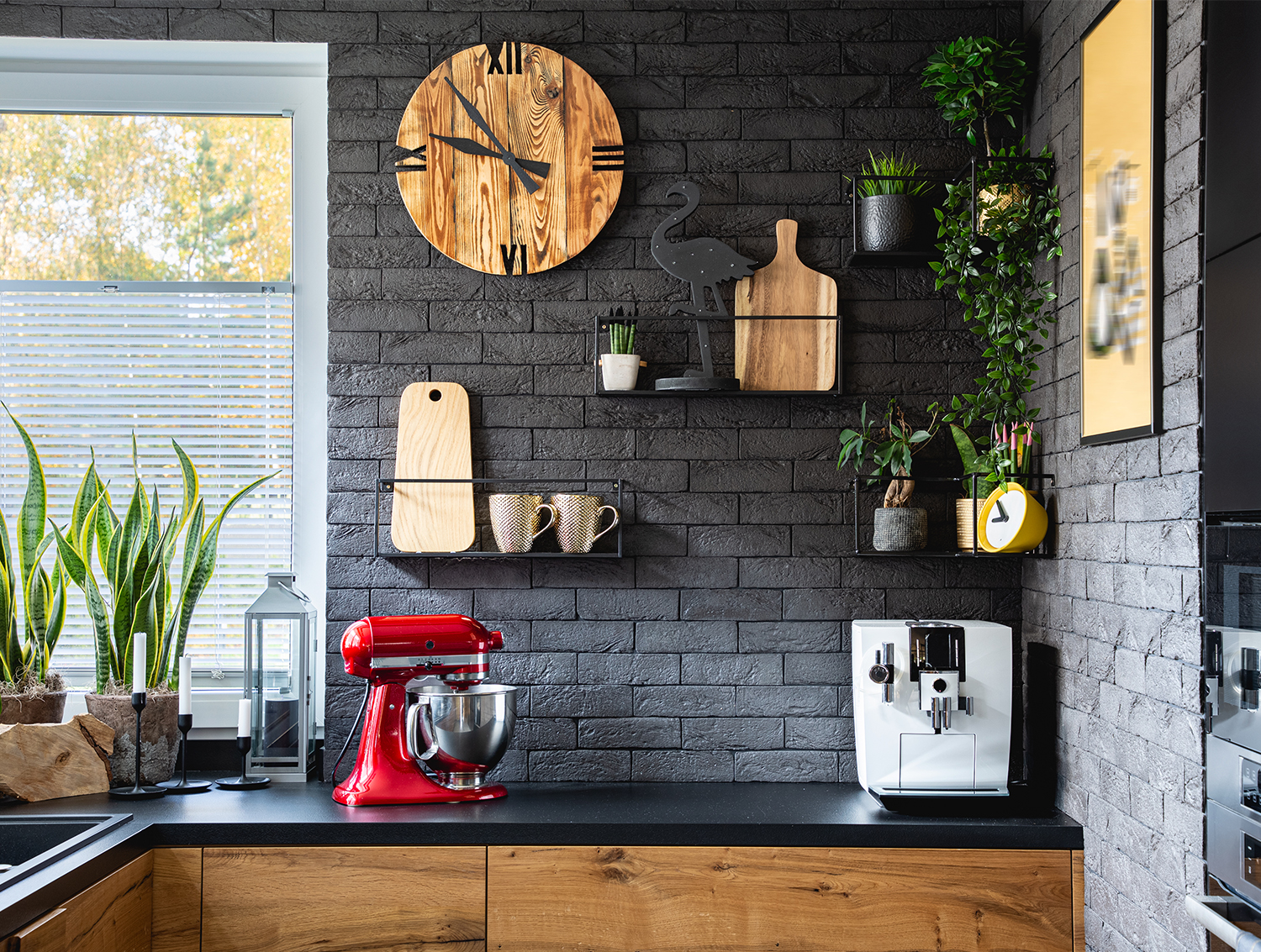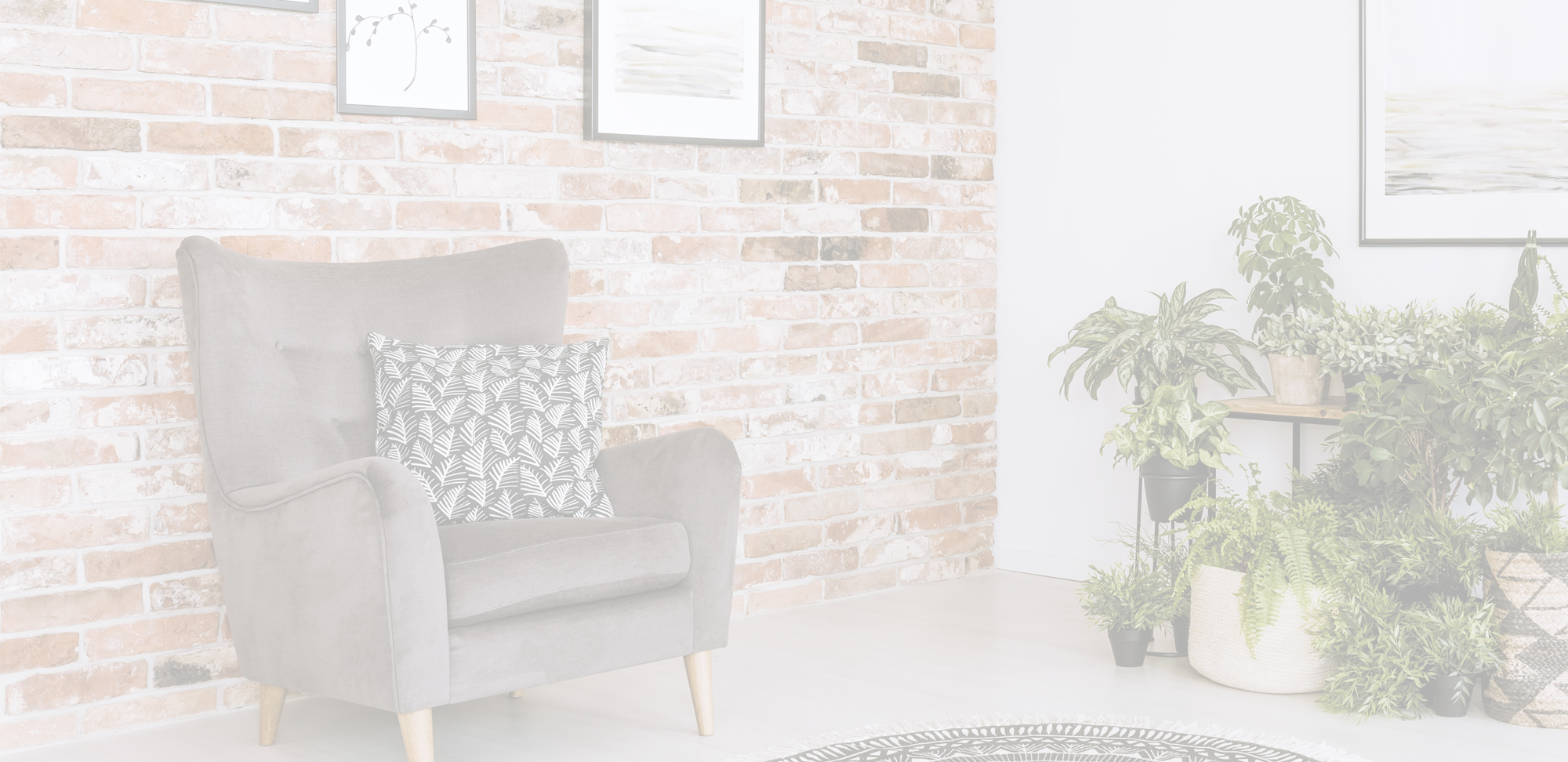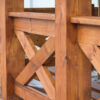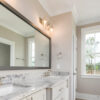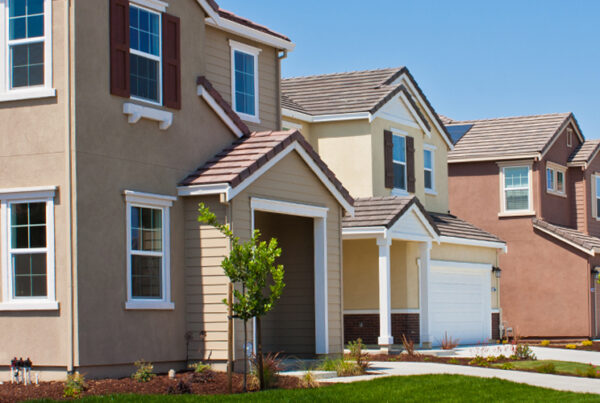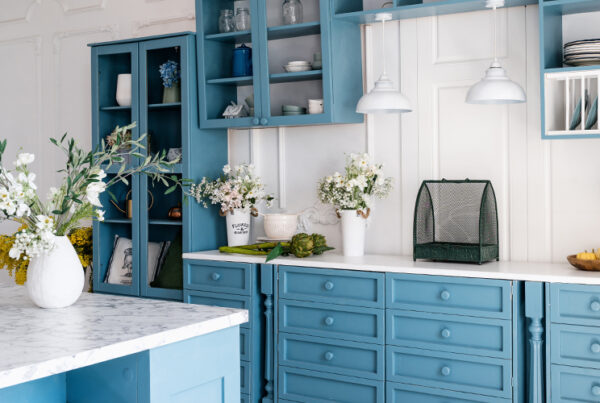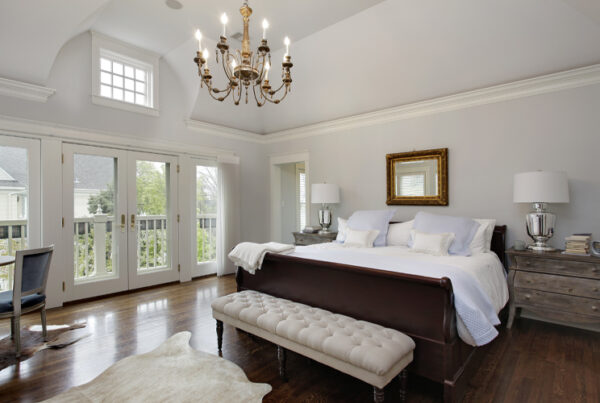
Painting brick isn’t particularly tricky, but does pose some unique challenges that you want to know about before embarking on a home project. As far as hardscape materials go, brick is one of the most porous (or moisture-absorbent) to work with. As well, its small holes and crevices demand extensive cleaning beforehand and thoroughness when painting. This guide outlines how to paint brick, whether it’s an interior fireplace or the entire exterior of a house.

Preparing the Brick
It’s important to remember that brick takes more preparation than other surfaces before painting. Brick can hold a myriad of contaminants that can bar the paint from adhering properly.
Cleaning
Due to the nature of the material, unwanted particles such as dust, dirt, hair, etc., will most likely be embedded in the brick from the start. Brick also attracts efflorescence, or when salt is formed within a porous material and migrates to the surface. This manifests itself as visible white streaks across the top of the brick. A thorough cleaning beforehand should always be the first step when painting a brick house or other brick painting.
Soap and water is the best route, since other cleaning solutions can introduce unwanted chemicals into the brick surface. Avoid using solutions advertised to clean brick – though they may clean brick well, they’re not chemically designed to be a pre-painting cleaner. If efflorescent salt deposits are giving you trouble, a vinegar-water solution can help clean more thoroughly. It’s important to wash any soap or vinegar off with water afterward.
Using a tool with some teeth is recommended, such as a stiff-bristled or wire scrub brush, to extract all unwanted foreign elements.
As well, you want to allow for the brick to thoroughly dry before moving onto the next step. This can take longer than expected because of its porosity, but be patient! The brick needs to be completely dry before applying primer and paint.
Assessing Damage
It’s best to paint brick that is in good condition for optimal paint coverage and structure longevity. If your brick has major cracks or breakage, or needs other extensive repairs, it’s recommended that those issues be addressed before painting.
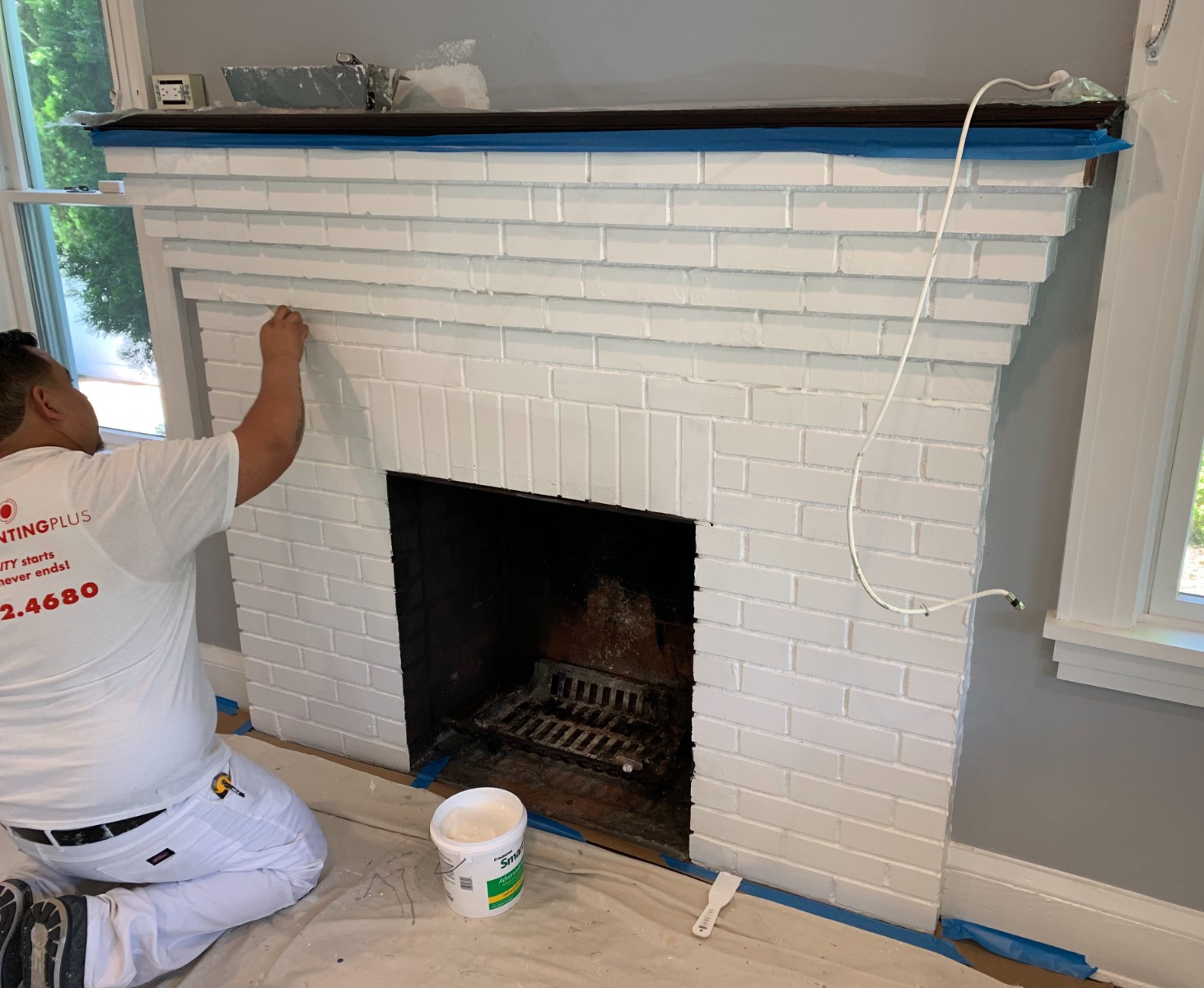
Painting Brick
Applying Primer
This step should never be left out when painting brick! Since brick is especially porous, a coat (or two) of masonry primer is imperative before applying paint. Otherwise, the brick will absorb more paint and thus more will be needed to complete the brick painting service. As well, similarly to other surface areas inside the home, any drastic color changes won’t be as effective without a layer of primer to create a proper canvas.
Once your primer is down and completely dry, you’re ready to apply paint.
Applying Paint
Brick will still absorb some of the paint even after applying primer, so be prepared to use a decent amount in order to get even coverage. Being meticulous is important given the amount of small spaces that need to be painted. The smaller the paint applicator, the better. A hand brush or small roller is recommended when painting brick, and – if you have the means – a paint sprayer will also do the trick. Between the porosity of the brick and all its small spaces, hiring professionals is recommended to get a clean-looking finished product.
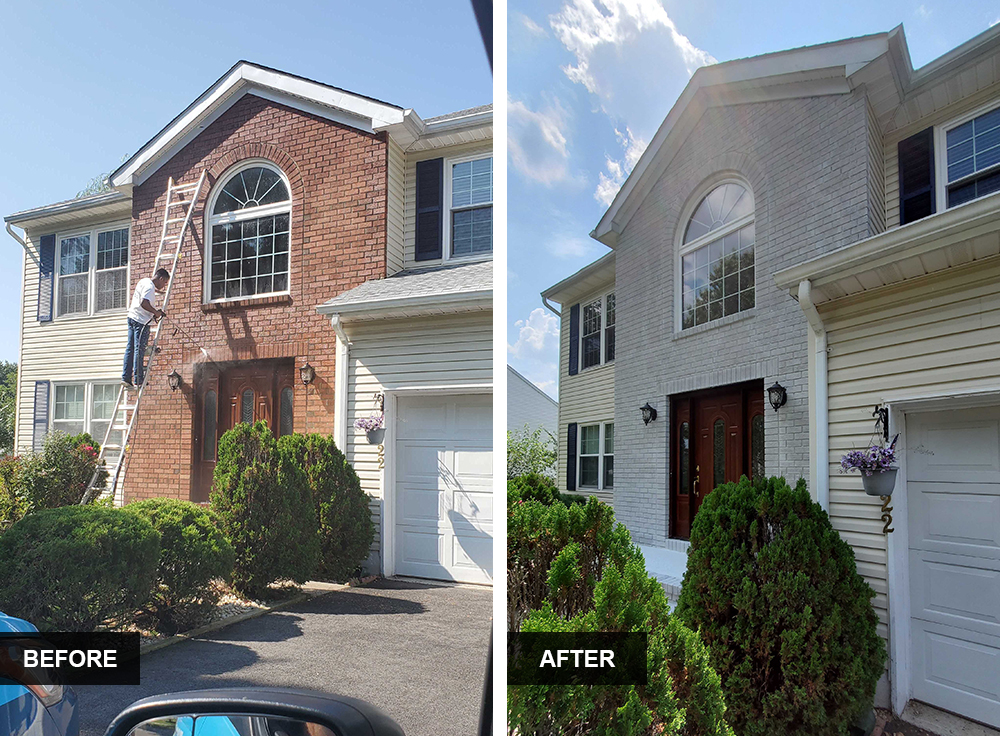
Styles of Brick Painting
Popular styles of painting brick tend to gravitate toward true neutrals (white, black and the spectrum of gray in between) or revert to a shade of red similar to the color of the brick itself.
Restorative Red
Brick painting isn’t always about creating a radical change. A popular option when painting brick is a red similar in shade to the brick itself. This replicates the original look of the brick while covering any blemishes or marks. The finished product is a clean, classic-looking brick surface.
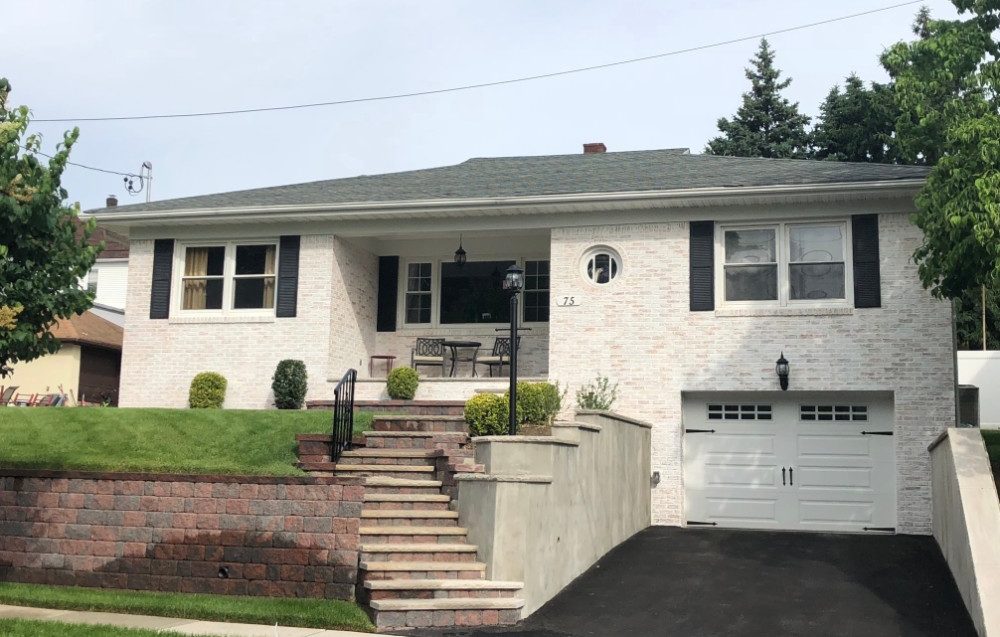
White or Whitewashing
Extremely popular among Precision Painting Plus customers is a technique called whitewashing. This involves covering the brick with an opaque coat of white paint, giving them an ashy and sophisticated look while enabling the texture of the brick still visible. It gives the brick a finely-aged and rustic appearance.
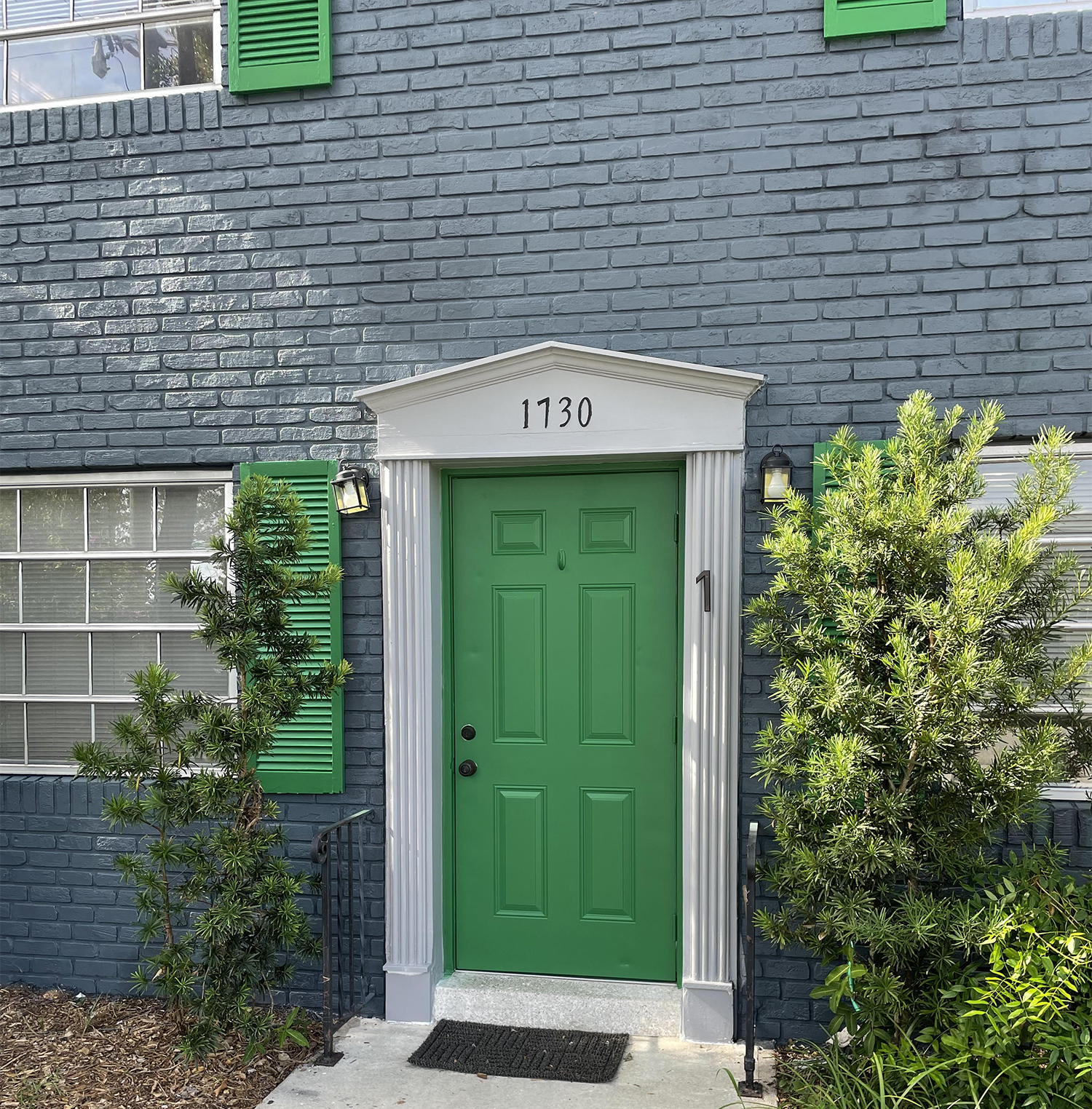
Gray
Painting a brick house or brick surface gray helps calm the brick’s busy symmetrical appearance. This delivers a look of elegance, which is why choosing gray paint when brick painting is increasingly popular.
Black
If you’re looking to downplay that brick wall, try using black or a dark shade of gray. Painting brick black can help diminish the blocky look of brick in your home. When painted black, the outlines of the individual blocks become less apparent, and thus the surface takes on a more subtle appearance.
There’s no special secret in knowing how to paint brick, but preparing properly and understanding your material are very important. Just clean, prime, and paint!
